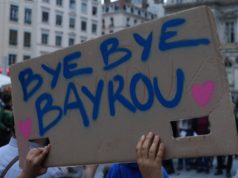The driver of a Tesla Model S and one of his passengers died after the vehicle was involved in a single-car crash in Florida on Tuesday.
The driver of a Tesla Model S and one of his passengers died after the vehicle was involved in a single-car crash in Fort Lauderdale, Florida, on Tuesday evening, the Fort Lauderdale Police Department has confirmed in a press release.
The vehicle caught fire after it crashed into a concrete wall at around 6:46 p.m. The vehicle’s speed is believed to be a factor in the accident.
The driver, Barrett Riley, and front-seat passenger, Edgar Martinez, were both 18-years-old. The backseat passenger, 18-year-old Alexander Berry, was thrown out of the vehicle after the crash and taken to a nearby hospital. Berry’s condition has not been reported.
The Fort Lauderdale Police Department is investigating the accident.
A local resident described the aftermath of the crash to CBS affiliate WFOR .
„Two people trapped in the front seats,“ the person, who was not identified by name, said. „Nobody could help because the car was on fire. The fire was so intense that nobody could reach them. There were people trying to get there but it wasn’t happening.“
Another resident, Wendy Mascolo, told WFOR the area where the accident occurred has a history of crashes and speeding.
„The speed limit is 30 and even if you come around that curve doing 30, it still is a little too fast,“ she said. „You hear it all night. It wakes me up in the middle of the night all the time with them speeding.“
A Tesla spokesperson told Business Insider the company is „working to establish the facts of the incident“ and will cooperate with local authorities.
„Our thoughts are with the families and friends affected by this tragedy,“ the representative said.
It’s unclear if the company’s semi-autonomous Autopilot system was engaged at the time of the accident. The feature caps a vehicle’s speed at 5 mph above the local speed limit on residential roads.
In 2013, the Model S received a safety rating from the National Highway Traffic Safety Administration (NHTSA) that was higher than any car the agency had previously tested.
In response to the rating, Tesla explained that the lack of an engine block in the car’s front section increases the vehicle’s crumple zone, which reduces the impact to a car’s occupants during a crash.
After a fatal Model X accident in March that involved the vehicle’s battery catching fire, Tesla said the batteries in its vehicles are designed to decrease the rate at which a fire can spread.
„Tesla battery packs are designed so that in the rare circumstance a fire occurs, it spreads slowly so that occupants have plenty of time to get out of the car,“ the company wrote on its website.
You can watch WFOR’s full report below:
NOW WATCH: A Wall Street chief economist explains what could be the saving grace for mega-cap tech companies
See Also:






